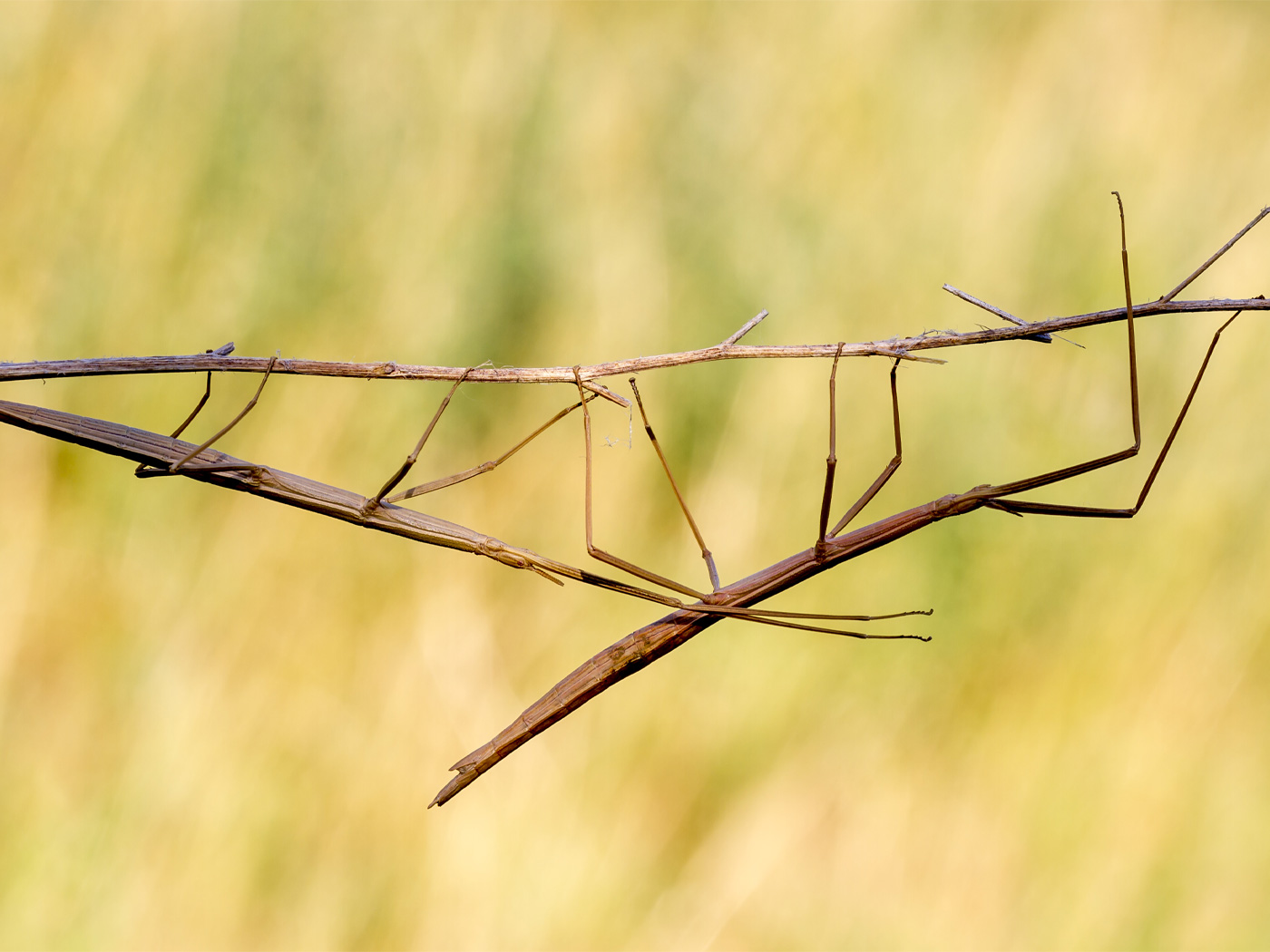The popular documentary series Skyscraper featured a fascinating look at architects using the design process. Viewers appreciated learning how this process is implemented. For anyone wanting to create the best explanation for the origin of nature's design--which is the main issue--learning this process is vital. Charles Darwin faced an extraordinarily difficult task in devising his naturalistic explanation. He needed to find a source of intelligence--a substitute god--to explain how the diversity of life could display countless features that clearly look like they were chosen by intelligence for specific purposes. His clever explanation? Natural selection.
After 150 years, natural selection stands as the only credible alternative to supernatural creation. But showing someone why Darwin's concept cannot explain anything about the origin of complex design requires an understanding of why the words "selection" and "natural" are so widely influential.
Making Natural Selection Look Like Human Engineering
Consider why intelligence is naturally coupled to design. First, engineers use a process that sees a need. Next, they develop a plan that depends heavily on selecting the best parts and processes that fit specific characteristics of the need. A special decision-making capacity, called intelligence, is vital to "see" and "select." Everyone can discern that intelligence is only found in certain living things, primarily humans and God.
The word "select" becomes the key to understanding Darwin's link between the intelligent living world and non-thinking nature. His stroke of genius for those who reject supernatural origins was to take the random phenomena of whether the traits of living things either fit their environment or not and then call it a "selection" process of "nature." From this he extrapolated the idea that nature could make choices, which then allowed the plausible conclusion that nature actually possesses a sort of innate intelligence. Thus, Darwin successfully injected the attribute of intelligence into the non-living world--a feat many thought impossible. How did he advance this counterintuitive concept?
Darwin began Origin of Species with the simple observation that offspring are very similar to their parents, but not exactly the same. Differences between parent and offspring (or between siblings) were important because nature might favor--"select"--those that afforded better chances for survival. If differences accumulate over time, then future offspring may be very different from their ancestors--a truly elegant and simple, yet reasonable, observation that creatively promoted a type of intelligence in nature. And not just a simple intelligence: nature is portrayed as somehow thinking--a talented stand-in god--that always chooses the "best" traits and "saves" them to "build" things.
The power of this concept to captivate minds must never be underestimated. It is taught in most schools as absolutely true. Understanding this provides a thoughtful way to turn a conversation by saying, "Darwin had the most incredible idea ever conceived to explain design naturally. But, like all ideas, his was not perfect-- it really does not explain design."
"But why can't it explain design?" Natural selection can be seen as an observation about genetic variants that allow differences in survival. But when used to explain the origin of a design, it becomes a crippled explanation, making great claims that it cannot support. Why? Because the "selection" it portrays is a distortion of selection in real design processes.
Unintelligent Nature Fails as a Design Process
In design processes, engineers bear the burden to do what only they are able to do--choose elements for their plan that best fit the characteristics for meeting the need. A plan that fits the characteristics "survives" the process. The engineers are active and the need is passive. Process cannot be viewed from the perspective of the "need"--that it "selected" vital features of the plan. Intelligence would then be attributed to a non-living thing, which does not take place in human design processes. Yet, this is precisely what Darwin does with natural selection--nature's so-called design process. This lends to the "conclusion that these favored individuals had been selected to survive," as Harvard's foremost evolutionist, Ernst Mayr, wrote.1 But nature does not have decision-making intelligence.
In nature, living organisms must do what only they can do. They must generate the diversity of traits--via a "selection" process within their own DNA--that will fit vital characteristics to live within their environments. If no members of a group generate suitable traits, the group goes extinct. If some members generate traits that fit, they survive. Information within DNA and how that information is expressed correspond to the thinking and selecting of a real engineer. Living organisms are active, environments are passive.
Darwin's theory misrepresents the design process, viewing it mostly from the perspective of a passive environment that is falsely empowered to "select" the best traits. This masquerade was well-illustrated by Mayr: "A process of selection would have a concrete objective, the determination of the ‘best' or ‘fittest' phenotype."2 But in reality, the environment (or "nature") never selects or sets "concrete objectives."
Whether creatures live or die depends on their ability to generate information from their DNA3 to produce specific traits that fit environments. Thus, the ability to generate "beneficial variations"4 already resides in the living organism. This is the source of design that natural selection fails to explain. The theory fraudulently ascribes the powers of diversification to variables outside the creature when diversity depends solely on variables inside the creature.
Darwin's Theory Uses Circular Reasoning
Genetic variants may cause differences in survival, but that has nothing to do with explaining their design. What requires explanation is the origin of the biological apparatus with the ability to generate, save, and pass on variations in the first place.
On this point, Darwin's theory provides no useful knowledge, claiming, "nature's designer is nature"--an intrinsically circular explanation. It becomes undeniable since "cause" and "effect" are seen as equivalent. Not a single advocate of evolution can escape this circular reasoning. For them, the widespread circular reasoning that "it exists because it is favored by natural selection" is very compelling, but can be countered by showing that their influence resides more in the force of decree than in the power of explanation.
Attributing design to "natural selection" is also circular--but at a deeper level--making it harder to spot. Here is the circular part: "nature" is said to encompass both the environment and living things. Thus, the intelligent information residing in living things--the true source of design--is assimilated into "nature" and then cleverly credited to it. The step-by-step explanation for its origin is completely disregarded. So, "nature" has self-evident powers to "select" and save its own genetic varieties. As one evolutionist said, "Its truth is apparent" with "enormous power" as "a weapon of explanation."5 However, this "weapon" only shoots blanks, since Darwin's great explanation merely explains itself--a basic "truth" for evolution, but something wholly unacceptable to science.
Learning a Short Example
Look closely at Ernst Mayr's defense of Darwin for accepting that natural selection is nothing but "survival of the fittest":
Darwin adopted Spencer's metaphor in his later work. However, his opponents claimed that it was…a circular statement by defining "the fittest" as those who survive, but this is a misleading claim. Actually, survival is not a property of an organism but only an indication of the existence of certain survival-favoring attributes.6
Mayr's circular analysis is evident even as he denies that Darwinism is circular. According to him, "an indication of the existence of certain survival-favoring attributes" is…"survival." He cannot escape circular thinking.
Pulling It All Together
Only two explanations remain for the origin of nature's design: supernatural intelligence or natural selection. Evolutionists claim that the real design clearly seen in nature is only an appearance, while the apparent decision-making intelligence in nature is real. Both assertions are wrong.
Natural selection is at best an observation about genetic variants and differences in survival. As an explanation of design, it is completely crippled. First, Darwin distorts the design process by falsely attributing to the environment the power to "select" traits. In fact, the ability to generate traits is a property of living things enabling them to diversify, multiply, and fill environments. Whether or not these traits fit an environment determines survival. Second, Darwin fails to explain how the ability to generate traits in living things--the real source of information for design--originated. This capacity is simply assimilated into "nature" through circular explanations.
A person looking for a natural cause of design is still left to rely on random mutations building enormous genetic information that "emerges" over time. Magic words and chance.
Yet, the Lord Jesus Christ still stands as the best explanation for the design that is built into living things. Just as the Bible says, "For the invisible things of him from the creation of the world are clearly seen, being understood by the things that are made" (Romans 1:20).
References
- Mayr, E. 2001. What Evolution Is. New York: Basic Books 117.
- Mayr, 118.
- "Their DNA" would include variations of genes, recombination, mutations, lateral gene transfer, epigenetic factors, and other ways DNA diversity is increased.
- "Beneficial variants" was a common description given by Darwin throughout his writings.
- Waddington, C. 1960. Evolutionary Adaptations. In Yax, S., ed. The Evolution of Life. Chicago: University of Chicago Press, 385.
- Mayr, 118.
* Dr. Guliuzza is ICR's National Representative.
Cite this article: Guliuzza, R. 2010. Natural Selection Is Not "Nature's Design Process." Acts & Facts. 39 (4): 10-11.














